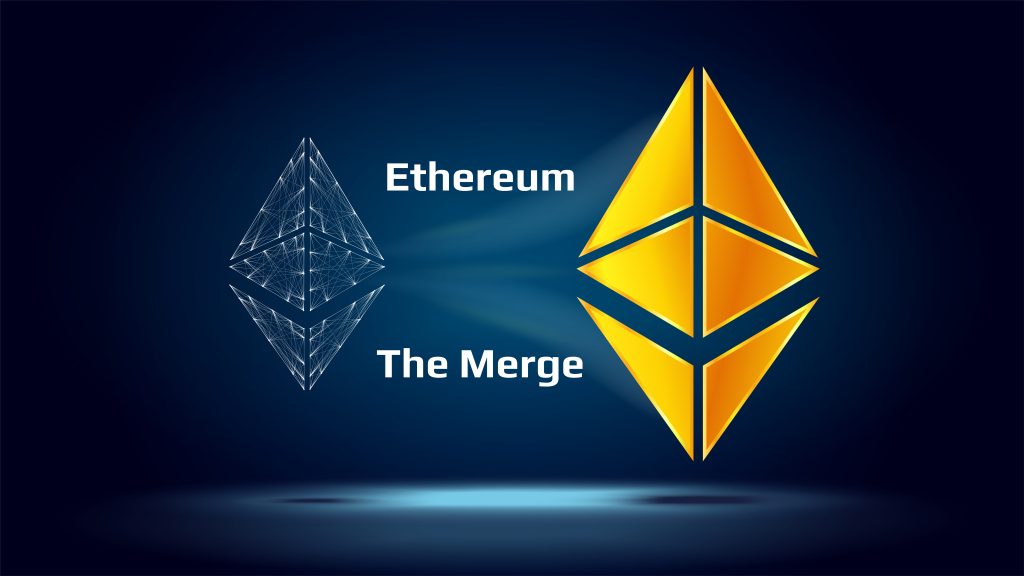Welcome to a new era of Ethereum! In this article, we’ll explore the highly anticipated Ethereum 2.0 upgrade, also known as “the Merge.” As one of the leading cryptocurrencies, Ethereum has made a significant impact on the blockchain world. However, with the network’s growth comes the need for improvements in scalability, security, and energy efficiency. That’s where Ethereum 2.0 comes in.
Ethereum has paved the way for decentralized applications and smart contracts.
However, the limitations of Ethereum 1.0 became increasingly apparent as more users, developers, and businesses started utilizing the platform. The need for an upgrade was clear, and the Ethereum community came together to devise a plan for a more scalable, secure, and energy-efficient network. The result: Ethereum 2.0, a comprehensive upgrade that aims to revolutionize the blockchain space once again. With the Merge, Ethereum sets out to overcome its previous obstacles and enhance its overall performance, making it more attractive to users and developers alike.
The Evolution of Ethereum
Since its launch in 2015, Ethereum has grown exponentially, making a lasting impression on the blockchain and cryptocurrency industries, moving from Ethereum 1.0 to Ethereum 2.0 through a series of carefully planned upgrades.
The development of Ethereum 2.0 has been a collaborative effort involving researchers, developers, and the broader Ethereum community, all working together to push the boundaries of what blockchain technology can achieve.
Ethereum 1.0 and its Limitations
Ethereum 1.0, while revolutionary, had its drawbacks, which became more evident as the platform gained widespread adoption:
- Scalability: The network could handle only 15 transactions per second, leading to network congestion and high transaction fees, particularly during periods of high demand. This limitation restricted the growth of decentralized applications (dApps) and hindered the user experience.
- Security: Ethereum 1.0 was vulnerable to 51% attacks, in which an attacker gains control of the majority of the network’s hashing power, posing a risk to the network’s integrity and stability. This security concern made it difficult to ensure the long-term viability of the network.
- Energy consumption: Reducing emissions by ~99.95%, Ethereum has become a more sustainable blockchain platform
- Proof-of-Work (PoW): consensus mechanism used by Ethereum 1.0 consumed vast amounts of electricity, raising concerns about the network’s environmental impact and sustainability.
Transitioning to Ethereum 2.0
Ethereum 2.0 has been rolled out in stages, each designed to address specific limitations of the original network and pave the way for a more advanced, efficient, and secure blockchain ecosystem:
- Beacon Chain launch: Introduced in December 2020, the Beacon Chain marked the beginning of Ethereum’s transition to the Proof-of-Stake (PoS) consensus mechanism. The new chain runs parallel to Ethereum 1.0 and lays the foundation for subsequent upgrades, providing a more secure and energy-efficient consensus mechanism.
- Shard Chains: The next phase in Ethereum 2.0’s development focuses on improving the network’s scalability. Shard Chains divide the Ethereum blockchain into smaller, interconnected chains called “shards,” each capable of processing transactions and smart contracts independently. This approach increases throughput and allows Ethereum 2.0 to handle thousands of transactions per second, reducing congestion and fees.
- The Merge: This crucial milestone was executed on September 15, 2022, which combined Ethereum 1.0 and Ethereum 2.0, completing the transition from PoW to PoS. The Merge combines the existing Ethereum 1.0 chain (also known as the “execution layer”) with the Ethereum 2.0 Beacon Chain (the “consensus layer”), creating a single, unified network that inherits the best of both worlds.
- Further upgrades and optimizations: Ethereum’s evolution won’t stop with the Merge. The Ethereum community is continually researching and developing new technologies to enhance the network’s performance, security, and functionality. Future upgrades may include stateless clients, zero-knowledge proofs, and more efficient cryptographic algorithms.
The Evolution of Ethereum is a testament to the resilience and dedication of its community. As the network continues to grow and mature, Ethereum 2.0 promises to deliver a more robust, scalable, and eco-friendly platform for decentralized applications, smart contracts, and digital assets, shaping the future of the blockchain landscape.
Understanding the Merge


The Merge is a critical milestone in Ethereum’s transition to Ethereum 2.0, marking the point where the existing Ethereum 1.0 chain integrates with the new Ethereum 2.0 Beacon Chain. However, to truly appreciate the significance of the Merge, it’s essential to understand its primary components and what it brings to the table.
The Significance of the Merge
The Merge, which took place on September 15, 2022, represented the culmination of years of research and development aimed at addressing Ethereum’s limitations in scalability, security, and energy efficiency. By combining Ethereum 1.0 and Ethereum 2.0, the Merge creates a unified platform that leverages the strengths of both networks and paves the way for the next generation of blockchain technology.
Combining Ethereum 1.0 and Ethereum 2.0
The process of merging Ethereum 1.0 and Ethereum. The Merge brought a host of improvements to the Ethereum ecosystem, addressing the limitations of Ethereum 1.0 and setting the stage for a more efficient, secure, and scalable blockchain network.2.0. This involves integrating the execution layer of Ethereum 1.0, which is responsible for processing transactions and smart contracts, with the consensus layer of Ethereum 2.0, which governs the agreement on the state of the blockchain.
Moreover, the execution layer will continue to operate as it does in Ethereum 1.0, ensuring compatibility with existing dApps and smart contracts. Meanwhile, the consensus layer will adopt the Proof-of-Stake mechanism introduced by the Ethereum 2.0 Beacon Chain, replacing the energy-intensive Proof-of-Work algorithm used in Ethereum 1.0.
Transition from Proof of Work to Proof of Stake Completed
The shift from PoW to PoS is a transformative change for the Ethereum network. Under PoW, miners compete to solve complex mathematical puzzles, with the first to find a solution earning the right to add a new block to the blockchain. This process requires significant computational power and energy consumption, contributing to environmental concerns and limiting the network’s long-term sustainability.
PoS, on the other hand, selects validators based on the amount of cryptocurrency they hold and are willing to “stake” as collateral. Validators are chosen to propose and validate new blocks, with rewards allocated proportionally to the amount of cryptocurrency staked. This approach drastically reduces energy consumption and provides a more secure, scalable, and eco-friendly consensus mechanism.
Benefits of the Merge


The Merge brings a host of improvements to the Ethereum ecosystem, addressing the limitations of Ethereum 1.0 and setting the stage for a more efficient, secure, and scalable blockchain network. Here, we’ll delve into the key benefits of the Merge and explore how they contribute to the overall enhancement of the Ethereum platform.
‣ Scalability Improvements
One of the primary drivers behind the Ethereum 2.0 upgrade is the need for better scalability. With the Merge, Ethereum’s transaction throughput increased significantly, enabling the network to handle thousands of transactions per second. This improvement is achieved through the introduction of shard chains, which partition the blockchain into smaller, more manageable segments. The result is a more efficient and responsive network capable of meeting the demands of a growing user base and supporting a wide range of decentralized applications.
‣ Enhanced Security
The Merge also enhances Ethereum’s security by introducing the Proof-of-Stake (PoS) consensus mechanism. Under PoS, validators are chosen based on their stake in the network, ensuring that those with the most significant financial investment are responsible for securing the blockchain. This approach reduces the risk of 51% attacks and other malicious activities, as would-be attackers would need to hold a substantial amount of cryptocurrency to pose a significant threat to the network. In short, this fosters greater trust and confidence in the Ethereum ecosystem.
‣ Environmental Impact
Another notable advantage of the Merge is its positive impact on the environment. The transition from Proof-of-Work (PoW) to PoS reduced Ethereum’s energy consumption dramatically, as PoS does not require the same resource-intensive mining process used in PoW. By minimizing energy consumption by ~99.95%, Ethereum has become a more sustainable blockchain platform and a more attractive option for environmentally conscious users and organizations.
‣ Staking Rewards
The introduction of PoS in the Merge also created new opportunities for Ethereum holders to earn rewards through staking. By locking up a portion of their Ether (ETH) holdings to support the network as validators, users can receive staking rewards in the form of newly minted ETH. This encourages participation in the network’s security and governance, while also providing an additional income stream for those who choose to stake their cryptocurrency.
The Merge Timeline and Milestones


The journey towards Ethereum 2.0 has been a long and complex process, involving numerous milestones and technological advancements. In this section, we’ll explore the key events in the Ethereum 2.0 timeline and discuss the anticipated milestones as the network continues to evolve.
Past Achievements
- December 1, 2020: The Beacon Chain, the first phase of Ethereum 2.0, was successfully launched. The Beacon Chain introduced the Proof-of-Stake consensus mechanism and allowed validators to start staking their Ether.
- 2021: The Ethereum community continued to work on improving the network, focusing on scalability solutions and laying the groundwork for the upcoming shard chains and Merge.
- 2022: The Altair upgrade, which brought various improvements to the Beacon Chain, went live. It introduced new validator incentives, light client support, and other optimizations to prepare the network for the Merge.
Completion Date
The Merge was successfully executed on September 15, 2022, marking the completion of Ethereum’s transition to a Proof-of-Stake consensus mechanism. This critical milestone saw Ethereum 1.0 and Ethereum 2.0 combined into a single, cohesive network, transitioning Ethereum from a Proof-of-Work to a Proof-of-Stake consensus mechanism.
Future Plans for Ethereum
After the successful completion of the Merge, the Ethereum community has shifted its focus to the following objectives:
- Shard Chains: The introduction of shard chains will further increase Ethereum’s scalability, allowing for a more efficient and responsive network. Shard chains divide the blockchain into smaller, more manageable segments, enabling higher transaction throughput.
- Statelessness and State Expiry: To optimize the Ethereum network further, the community is researching statelessness and state expiry. These technologies aim to reduce the size of the Ethereum blockchain and improve overall efficiency.
- Layer 2 Solutions: As the Ethereum network continues to grow, layer 2 scaling solutions like rollups and sidechains will play a critical role in enhancing its capabilities. These technologies will work in tandem with Ethereum 2.0’s core improvements to provide a more robust and scalable platform.
The Merge marks a significant step in Ethereum’s evolution, but it’s important to remember that the network’s development will not stop there. Notwithstanding, Ethereum will continue to adapt and grow, driven by a dedicated community of developers and enthusiasts committed to building a better, more decentralized future.
Ethereum vs Bitcoin


While Ethereum and Bitcoin are both groundbreaking blockchain networks, they serve different purposes and have distinct features. Here’s a comparison of these two leading cryptocurrencies:
Purpose and Use Cases
Bitcoin was created as a digital alternative to traditional fiat currencies, aiming to provide a decentralized, peer-to-peer electronic cash system. Its primary use case is to serve as a store of value and a medium of exchange.
Ethereum, on the other hand, was designed as a platform for decentralized applications (dApps) and smart contracts. While it does have a native cryptocurrency called Ether (ETH), Ethereum’s broader goal is to facilitate the development and deployment of decentralized applications across various industries.
Smart Contracts
One of the key differences between Ethereum and Bitcoin is Ethereum’s support for smart contracts. Smart contracts are self-executing agreements with the terms of the contract directly written into code. They automatically execute when predefined conditions are met, enabling trustless transactions without the need for intermediaries.
Bitcoin’s scripting language is limited in comparison, and while it does offer some basic smart contract capabilities, it lacks the flexibility and functionality of Ethereum’s Turing-complete programming language, Solidity.
Consensus Mechanism
As mentioned earlier, Bitcoin uses Proof of Work (PoW) as its consensus mechanism, which requires miners to solve complex mathematical problems to validate transactions and secure the network. This process is energy-intensive and has raised concerns about its environmental impact.
Ethereum has successfully transitioned from Proof of Work to Proof of Stake with the Ethereum 2.0 upgrade, known as the Merge. PoS is more energy-efficient and allows validators to participate in securing the network based on their stake (amount of cryptocurrency held) rather than their computational power.
Recap
The Ethereum 2.0 upgrade, also known as the Merge, is a crucial step towards a more scalable, secure, and energy-efficient Ethereum network. By transitioning from Proof of Work to Proof of Stake, implementing sharding, and integrating innovative layer 2 scaling solutions, Ethereum 2.0 has addressed the limitations of the previous Ethereum 1.0 network and paved the way for a new era of decentralized applications and use cases.
In conclusion, the Merge will combine the Ethereum 1.0 and Ethereum 2.0 networks, combining the best of both worlds and enabling the Ethereum ecosystem to thrive. With its focus on scalability, security, and environmental sustainability, Ethereum 2.0 is poised to further solidify Ethereum’s position as a leading blockchain platform, providing a strong foundation for the future of decentralized technology.









